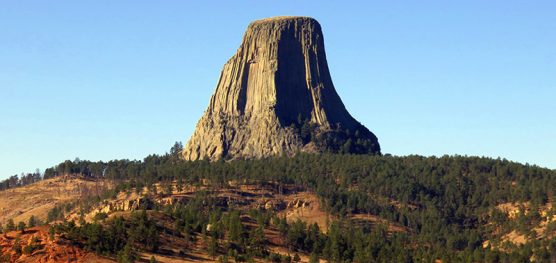 National monuments are protected areas that have been set aside through the use of the 1906 Antiquities Act by a sitting president. There are currently 170 national monuments in the United States. The Antiquities Act was signed into law by President Theodore Roosevelt on June 8, 1906. This act gives the president the authority, through presidential proclamation, to create national monuments.
National monuments are protected areas that have been set aside through the use of the 1906 Antiquities Act by a sitting president. There are currently 170 national monuments in the United States. The Antiquities Act was signed into law by President Theodore Roosevelt on June 8, 1906. This act gives the president the authority, through presidential proclamation, to create national monuments.
The land must be federal land or potentially private land that the president has accepted for the purpose of preservation. The act states that the smallest number of acres be included in the monument that will adequately protect the features that the monument is designed to protect. Protected features include scientific, cultural or heritage sites, and significant natural areas.
Typical features that potentially need protection are Native American ruins and other archaeological sites that would suffer at the hands of man if they were not protected under the Antiquities Act. This is one of the reasons the Antiquities Act was established in the first place – to prevent looting of Indian artifacts from abandoned habitation sites. Presidents have also used it to prevent commercial development and gas, oil and mineral extraction in sensitive areas.

Devil’s Tower National Monument, Wyoming
Historical landmarks, such as Mt. Wilson Observatory, also qualify for monument protection. Mt. Wilson was protected under the San Gabriel Mountains National Monument proclamation in 2014. Geographic features such as the Devil’s Tower and the Grand Canyon qualify for National Monument protection under the Antiquities Act.
Devil’s Tower was the very first national monument. It was proclaimed Sept. 24, 1906, by President Teddy Roosevelt.
National monuments range in size from millions of acres to the very smallest national monument, Father Millet Cross National Monument, at 0.0074 acres. Size has always been an issue in Washington, D.C. Many members of Congress look at the Antiquities Act as an over-reach of power, a “land grab” as it has been called.

Father Millet Cross National Monument, New York
New leases for grazing, mining and logging cannot be granted once and area becomes a national monument. Issues such as these can cause people to object to national monument status. In fact, some don’t take kindly to any kind of government interference. They prefer to manage the land themselves as they have done for years and years before a given proclamation.
President Trump recently signed an order at the Department of the Interior to review 20-plus national monument proclamations and potentially to reverse some of them. Trump referred to some of these designations as being a massive federal land grab. He said any abuses should end, and control should be returned to the people of the United States. He specifically also referenced the people of the state of Utah.
The Antiquities Act does not give a president the authority to revoke a national monument from a previous administration, but a sitting president can change the boundaries of a national monument. Under congressional authority, Congress can also convert a national monument to a national park, which has been done on several occasions.

Bears Ears National Monument
Bears Ears National Monument, which was designated by President Obama in December 2016, has raised a lot among elected officials in Utah. All of the Republican leaders in Utah were against the Bears Ears National Monument and were not shy about vocalizing their opposition. They believe the monument proclamation will devastate the local economy. Others argue national monument status will bring in more tourism and more support for local businesses. The “land grab” constituency argues that a much smaller number of acres would protect the heritage sites and not interfere with commerce.

Logging
This is just one of 20 different sites the Department of Interior, under the direction of Secretary Zinke, is studying. At the signing of the order, Zinke stated it would not reverse any monument designation. It should be noted the Supreme Court has refused to approve changes to monuments in the past.
It’s a war between ecologists and those who want to use the land for other purposes. Industries such as oil, gas, mining, logging and ranching want to lease this public land. Ecologists want to protect it. It’s been a constant give and take since 1906.
It will be interesting to see how this monumental crisis ends.
Dianne Erskine-Hellrigel is executive director of the Community Hiking Club and president of the Santa Clara River Watershed Conservancy. Contact Dianne through communityhikingclub.org or at zuliebear@aol.com.


San Gabriel Mountains National Monument

Mt. Wilson
Like this:
Like Loading...
Related









 Tweet This
Tweet This Facebook
Facebook Digg This
Digg This Bookmark
Bookmark Stumble
Stumble RSS
RSS













































REAL NAMES ONLY: All posters must use their real individual or business name. This applies equally to Twitter account holders who use a nickname.
2 Comments
GO TRUMP!
THE SILENT MAJORITY HAS SPOKEN!
DEMS GO FIND A CORNER TO CRY IN!
The silent 38 percent. Forests are the lungs
of the planet. They prevent desertification.
I like my public lands virgin. We don’t need
what’s under them as much as we need life
above them.